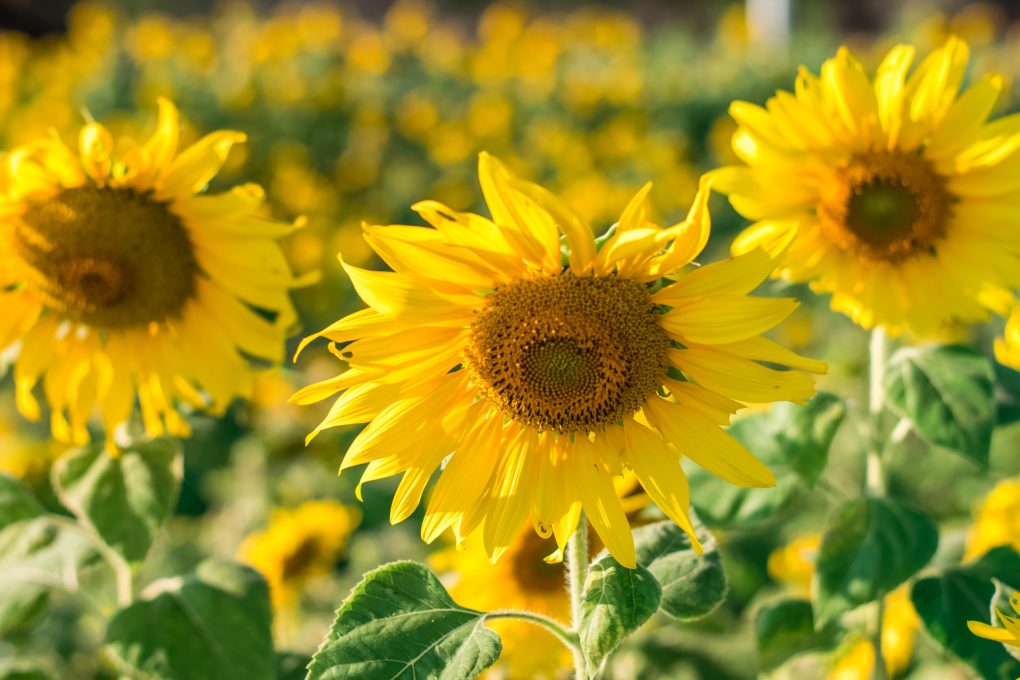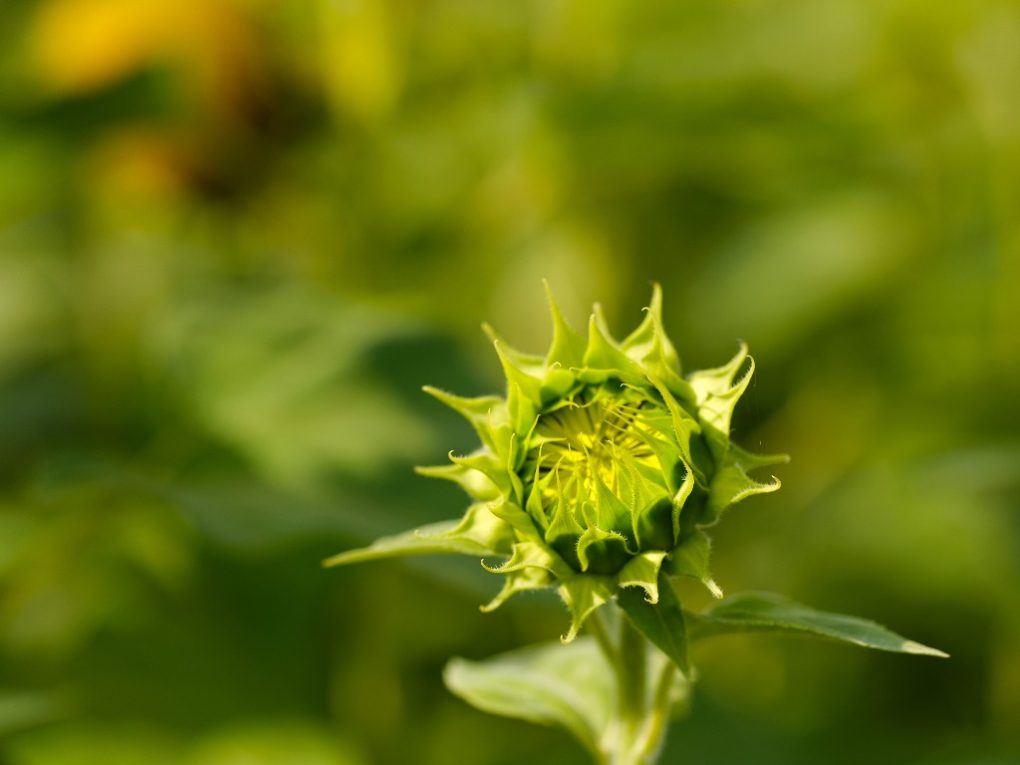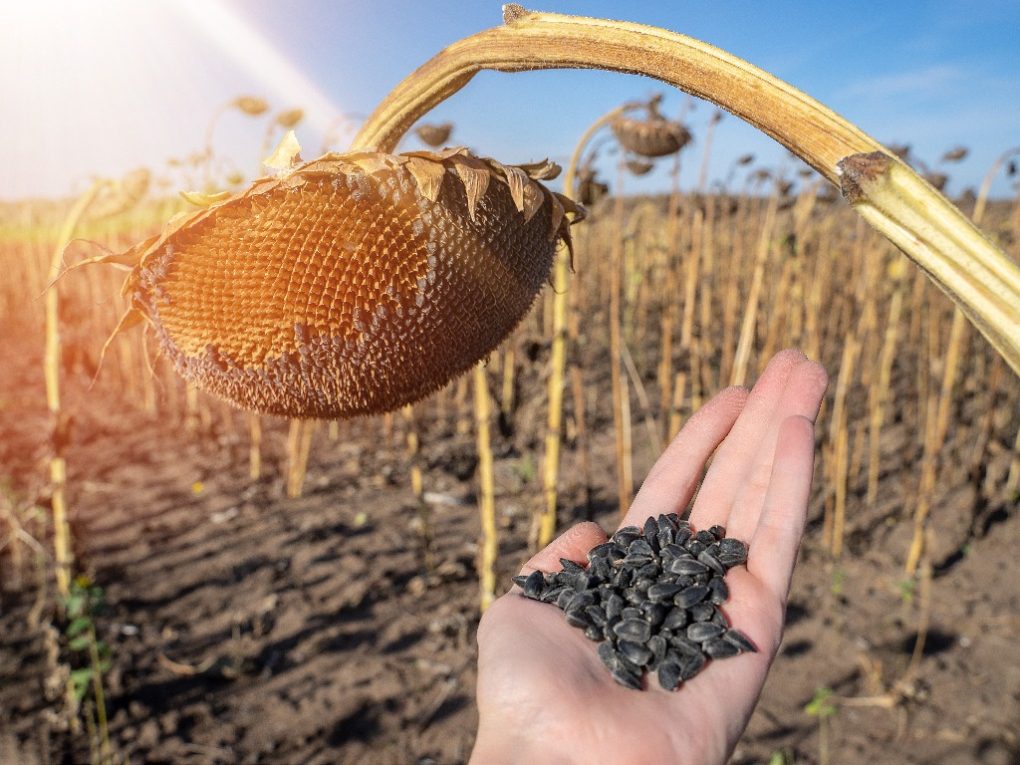How Does a Sunflower Reproduce: The Life Cycle of Sunflowers
Sunflowers reproduce sexually through a process known as pollination, which involves transferring pollen from the male reproductive organ (anther) of a flower to the female reproductive organ (stigma) of another flower.
Sunflowers are capable of both self-pollination, where the pollen from the anther fertilizes the stigma of the same flower, and cross-pollination, where the pollen is transferred between different flowers on separate plants. As bees and other pollinators visit the flowers to collect nectar and pollen, they inadvertently transfer pollen from one flower to another, allowing for fertilization and the production of seeds.

After fertilization, the sunflower’s petals will wilt and fall off, and the flower’s ovary will develop into a fruit known as an achene. Inside each achene is a single sunflower seed containing all the genetic information necessary to produce a new sunflower plant.
As the sunflower plant matures and the seeds reach maturity, they will dry out and turn brown, indicating they are ready for harvest. The seeds can then be collected and used for food, planting, or other purposes.
Table of Contents
The Stages of the Sunflower Life Cycle
Seed
The sunflower seed is the beginning of the sunflower life cycle. The seed is valuable as it contains the genetic information for a new plant. The spread of sunflower seeds is important for the plant’s survival and propagation, as it ensures that the seeds are dispersed over a wide area and have the best chance of germinating and growing into new plants.
When the sunflower heads dry out and the seeds are mature, they loosen from the head and can be carried away by the wind. The sunflower seed is also attractive to bees and other creatures, which help pollinate the flowers and distribute the seeds. Birds and other wildlife also feed on the seeds. These animals may carry the seeds away from the parent plant and deposit them elsewhere.
Sunflower seeds can also be spread by water. Seeds near a water source, such as a river or stream, can be carried downstream and deposited in new locations. Also, people may intentionally or accidentally spread sunflower seeds. For example, farmers and gardeners may plant sunflower seeds, while others may inadvertently spread seeds by dropping them on the ground when handling them.
Once planted, sunflower seeds absorb moisture from the soil, causing their shells to crack open and their roots to emerge. This allows the seeds to absorb vital nutrients from the earth’s surface. Therefore, sunflower seeds are very important for a healthy ecosystem.
Germination
Seeds begin absorbing moisture, and their shells begin to crack open to allow the absorption of water and vital nutrients from the soil. As the seed absorbs moisture, its seedling tissues develop and prepare for growth. In sunflower plants, germination begins with a seed typically smaller than other plant parts. During this phase, the sunflower’s roots emerge first to stabilize the plant.
The first part of the emerging plant is the radicle, which is the embryonic root of the sunflower plant. The radicle pushes downward into the soil and anchors the plant while absorbing water and nutrients. Once the radicle is established, the embryonic shoot grows upwards, pushing through the soil surface.
As the shoot emerges, it produces the cotyledons, the sunflower plant’s first leaves. The cotyledons provide the emerging plant with energy and nutrients until it can produce its own through photosynthesis.
The germination stage is critical for the survival of the sunflower plant, as it determines the plant’s ability to establish a strong root system and begin to absorb the water and nutrients it needs to grow. Adequate water, nutrients, and sunlight are essential for successful germination, and any deficiencies or stresses during this stage can hinder the plant’s growth and development.
Seedling
During the seedling stage, the first leaves or cotyledons are replaced by the true leaves, typically heart-shaped and arranged in an alternate pattern along the stem. During this phase, the plant comprises a thin stem and two leaves that absorb sunlight to produce food via photosynthesis. The stem may grow taller during the seedling stage, and the sunflower will grow many more leaves.
As the sunflower seedling grows, it develops a more extensive root system, enabling the plant to absorb water and nutrients more efficiently. The roots grow downward and outward, branching out to form a network of fine, hair-like structures called root hairs. These root hairs increase the surface area of the roots, allowing the plant to absorb more nutrients and water from the soil.
Like germination, the sunflower seedling stage is a critical period in the plant’s development, as the plant is vulnerable to environmental stresses, pests, and diseases during this time. Proper care during this stage, including adequate water, nutrients, and protection from pests and extreme weather conditions, can help ensure the sunflower seedling develops into a healthy, robust plant.
If seedlings are exposed to environmental factors such as extreme temperatures, lack of water, or insects, they can easily die. However, good care can help them survive and thrive. Sunflowers need consistent care throughout their growth cycle to ensure healthy development and maximum yield potential.
Bud

The nascent stage of sunflowers is when the plant forms flower buds, eventually developing into the iconic sunflower head. This stage occurs after the seedling stage when the plant has grown several true leaves and has established a strong root system.
Sunflowers are unique in that they produce a single large flower head that can contain thousands of individual flowers, each capable of producing a single seed. The flower buds of sunflowers form at the ends of the stems and are initially small and green, but they grow rapidly and can reach several inches in diameter.
As the sunflower buds grow, the individual flower heads open, revealing the bright yellow petals and the central disk containing the developing seeds.
Full Bloom
The full bloom stage of sunflowers is when the flower head is fully developed and the petals are open, creating the iconic and beautiful sunflower display. This stage occurs after the newborn stage, usually around 80 to 120 days after planting, depending on the variety and growing conditions.
During the full bloom stage, the sunflower head typically faces the sun, and the individual flowers within the head are arranged in a spiral pattern. The bright yellow petals, also known as ray florets, give the sunflower its characteristic appearance. The central disk of the sunflower head, which contains the seeds, is usually covered in small, dark florets.
The full bloom stage is crucial for the sunflower, as it is when pollination occurs. Bees, butterflies, and other insects are attracted to the sunflower’s bright yellow petals, and help transfer pollen from flower to flower, fertilizing the ovules and allowing the seeds to develop.
Wilt
The wilt stage of sunflowers is when the flowers begin to wither and die back, marking the end of the plant’s life cycle. During the wilt stage, the sunflower’s stem will dry out and become more brittle, and the leaves will turn yellow and brown. The sunflower head will start to sag and may even hang upside down, indicating that it is ready for harvesting.
The sunflower seeds within the head will be fully mature and ready for harvesting. The seeds can be removed from the head by shaking or gently rubbing them out and then cleaned and dried before storage or consumption.
While the wilt stage marks the end of the sunflower’s life cycle, it is also an important stage for the plant’s reproductive success. The mature seeds will be dispersed by the wind or animals, allowing the sunflower to reproduce and grow in new locations.
In some cases, sunflowers may be harvested before the wilt stage if grown for their edible seeds or other purposes. However, allowing the plant to reach the wilt stage is important for producing viable seeds and for the overall health and success of the sunflower population.
Regeneration

After the wilt stage, the mature sunflower head will contain numerous seeds, each of which can germinate and grow into a new sunflower plant. If the seeds are left on the plant or dispersed in the surrounding area, they can sprout and grow into new plants when favorable conditions are favorable.
The regeneration process for sunflowers starts with germinating the seeds, which requires a suitable environment with adequate moisture, warmth, and nutrients. Once the seeds sprout, the young sunflower plants will go through a series of growth stages, including seedling, budding, and full bloom, as described earlier.
The sunflower plants will continue developing and maturing during these growth stages, eventually producing their seeds and completing the regeneration cycle. Sunflowers can continue to regenerate themselves year after year, provided the seeds can mature, and the plants are given the necessary growing conditions.
